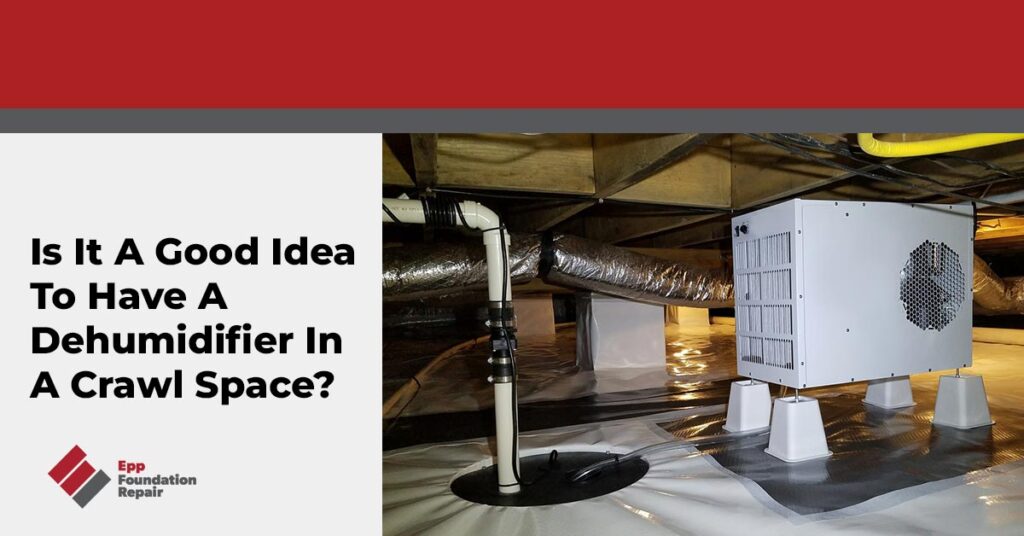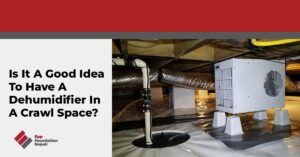Looking for information about under-house dehumidifiers because you have a moisture issue in your crawl space? If so, don’t hit that back button because you’ve landed on the right page. In this article, we’re going to go over why crawl space moisture is bad, the causes of crawl space moisture, when to use a dehumidifier (and when not to), the best way to get a clean, dry crawl space, and more.
Why Crawl Space Moisture Is Bad
Moisture in a crawl space can lead to a multitude of problems. Firstly, it can promote the growth of mold and mildew, which can be hazardous to human health when spores are released and inhaled. (Some of the air from your crawl space enters your home’s living area via the stack effect.)
Additionally, moisture can attract pests such as rats, mice, and termites, damaging the wooden structures in the crawl space that hold up your home.
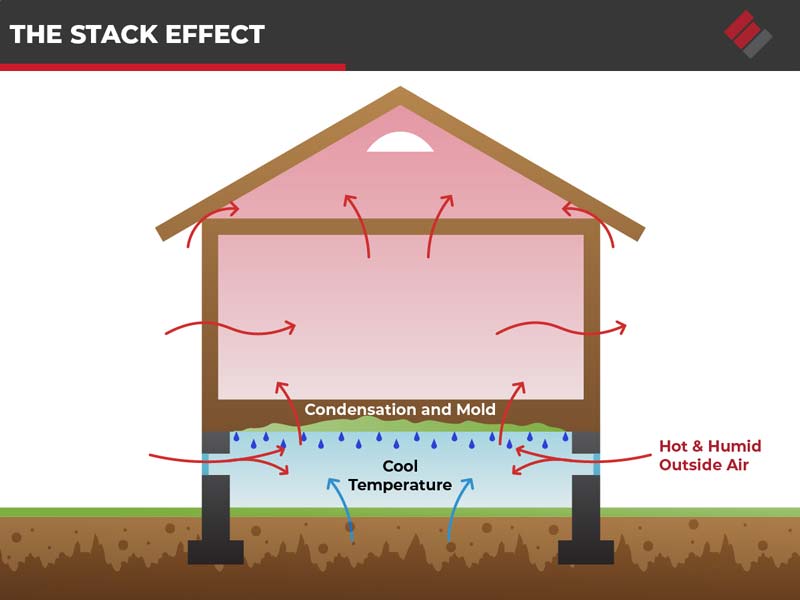
Furthermore, high levels of moisture in a crawl space can increase the humidity in the home, leading to an uncomfortable living environment and potentially damaging furniture and other belongings.
Moisture can also cause structural damage over time, accelerating the deterioration of wooden beams and supports.
Humidity can also make your home harder to heat and cool, which could translate to higher energy costs.
To prevent these issues, it’s important to properly seal and insulate the crawl space and manage any potential sources of moisture, such as leaky pipes or poor drainage. Regular inspections and maintenance can help catch any issues before they become more serious and costly.
Causes Of Moisture In A Crawl Space
Various factors, including the following, can cause moisture in a crawl space:
- Open vents – Warm, humid air enters the crawl space and condenses on cooler surfaces.
- Plumbing leaks
- Poor drainage around the foundation leading to water infiltration through the foundation wall and into the crawl space
- An improperly graded yard – The yard around your home should slope away from the foundation, so water doesn’t drain toward the foundation and soak into the ground.
- A high groundwater table – This could cause the dirt floor of the crawl space to become soggy.
As we mentioned above, moisture in a crawl space can lead to several negative consequences, including mold and mildew, wood rot and decay, foul odors, and even structural damage to the home.
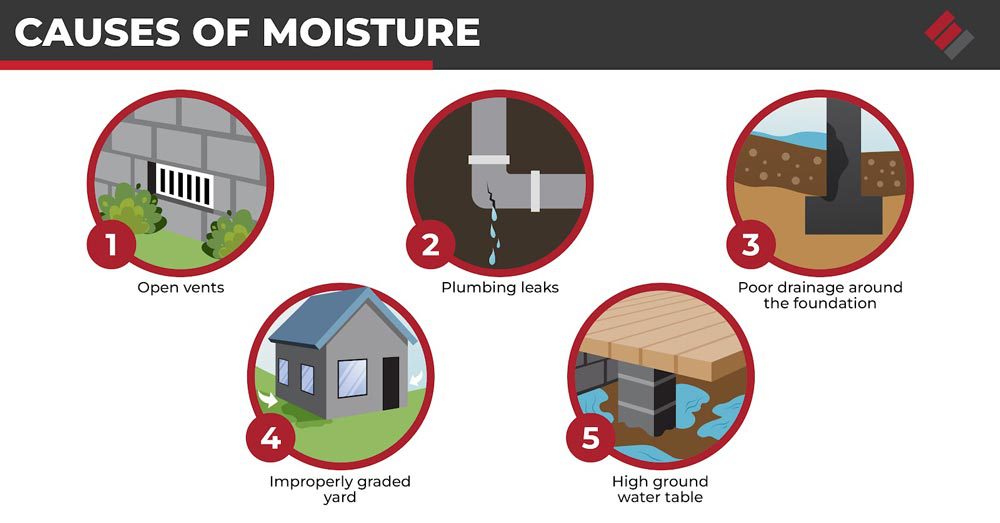
Homeowners need to take steps to identify and address the underlying causes of moisture in their crawl spaces to prevent damage to their homes and ensure the health and safety of their families.
Yes, A Dehumidifier In The Crawl Space Is a Good Idea, But Only If The Area Is Encapsulated
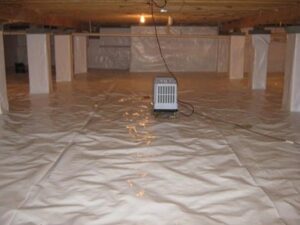
What is crawl space encapsulation?
Crawl space encapsulation involves sealing up the entire space using a thick, vapor-retarding barrier that covers the crawl space’s floor and walls. The barrier ensures that moisture and outside air cannot penetrate the crawl space, vastly reducing the humidity level. Crawl space encapsulation also dramatically reduces the risk of pests or other contaminants entering the crawl space, resulting in optimal air quality.
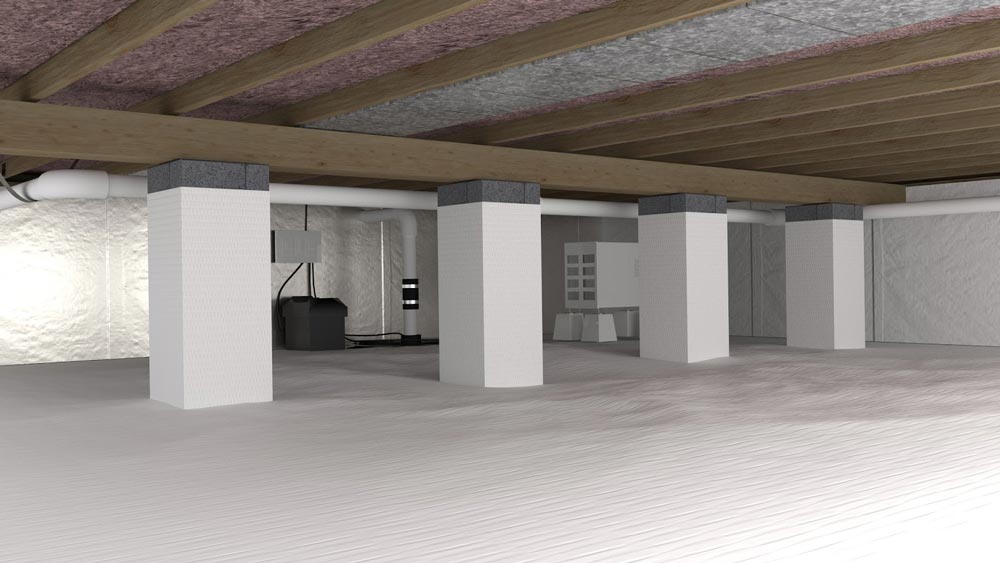
Encapsulation is not just an optional addition to a dehumidifier in a crawl space. It’s an absolute necessity. Without encapsulation, the dehumidifier will work much harder than necessary, leading to increased energy consumption, higher electricity bills, and a shortened lifespan. So, if you want to ensure that your crawl space is free from moisture, pests, and contaminants, and reduce the risk of health concerns associated with poor air quality, encapsulating your crawl space is a must before considering the installation of a dehumidifier.
For more information, see Don’t Install A Crawl Space Dehumidifier Without Encapsulation.
Eradicate Crawl Space Moisture With A Drain Tile System, Encapsulation, And A Dehumidifier
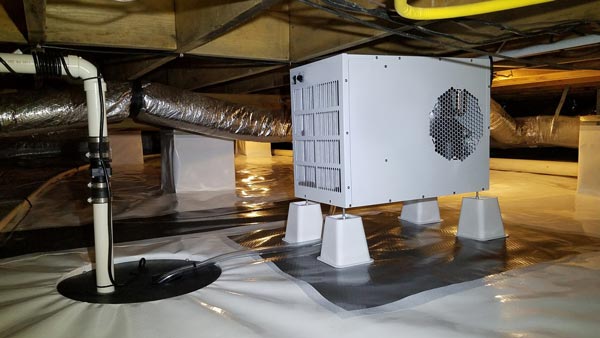
What is a drain tile system?
A drain tile system is the best way to prevent excess moisture from building up in the ground around the foundation. They come in two varieties: exterior and interior.
Installing an exterior drain tile system involves the following:
- Excavating around the foundation’s perimeter down to the footing.
- Digging a trench.
- Installing a perforated drainage pipe that channels excess groundwater toward a sump pit.
- When the sump pit fills with water, a sump pump turns on and expels the water away from the foundation.
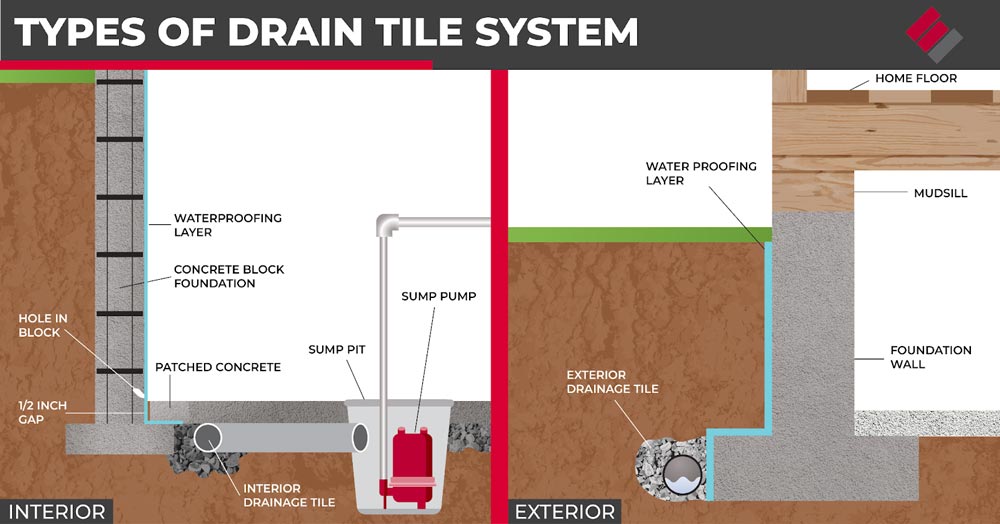
An interior drain tile system is installed around the inside perimeter of the crawl space and works similarly. Excess ground moisture goes into the drainage pipe, gets channeled toward a sump pit, and then expelled via a sump pump.
For more information about how drain tile systems work, see How Does A Drain Tile System Work?
As noted above, encapsulating your crawl space involves closing any openings or vents and covering the ground and walls with a thick vapor-retarding barrier. This seals your crawl space from the outside environment, which helps regulate humidity levels and prevents moisture from seeping into the area.
Using a dehumidifier will ensure the humidity level in the crawl space remains optimal to prevent mold growth but not so dry as to cause damage to the wooden structures in the crawl space.
A drain tile system, crawl space encapsulation, and a dehumidifier is the most effective way to eradicate crawl space moisture, protect your property from damage, and enjoy a dry, healthy home for years.
Common Signs Your Crawl Space Has A Moisture Problem
Here are some of the most common indicators that your crawl space has a moisture issue:
- Bad Odor – A musty or mildew smell – either in your home or the crawl space itself – is typically the first sign that excess moisture is present in the crawl space. This is due to the growth of various molds and other fungi that thrive in damp environments.
- Visible Mold Growth – Along with the musty smell, visible mold growth is another indicator of moisture in your crawl space. This mold can grow on walls, ceilings, and floors, leading to unsightly stains and even structural damage.
- Respiratory Problems – Because excess crawl space moisture encourages mold growth, anyone living in the house could experience allergies or other respiratory problems.
- Standing Water – Puddles of water in your crawl space are a sure sign that you have a moisture problem. Standing water can result from various causes, such as poor drainage, plumbing leaks, or a high groundwater table.
- High Humidity Level In Your Home – A high moisture level in your crawl space can lead to high humidity in your home’s living area, causing issues such as condensation, peeling paint, warping wood, and respiratory illnesses.
- Pest Infestations – Pests are always on the hunt for moist environments. If you see increased pests in your home, such as rats, cockroaches, or spiders, it may be a sign that your crawl space has excess moisture.
- Warped or Buckled Floors – If you notice damp and warped floors, it’s a clear indication of moisture in your crawl space. This can also lead to a weakened foundation, making your home unsafe.
- Bouncy or Sagging Floors – Your floor might feel bouncy when you walk on it. Furniture might even shake as you walk by.
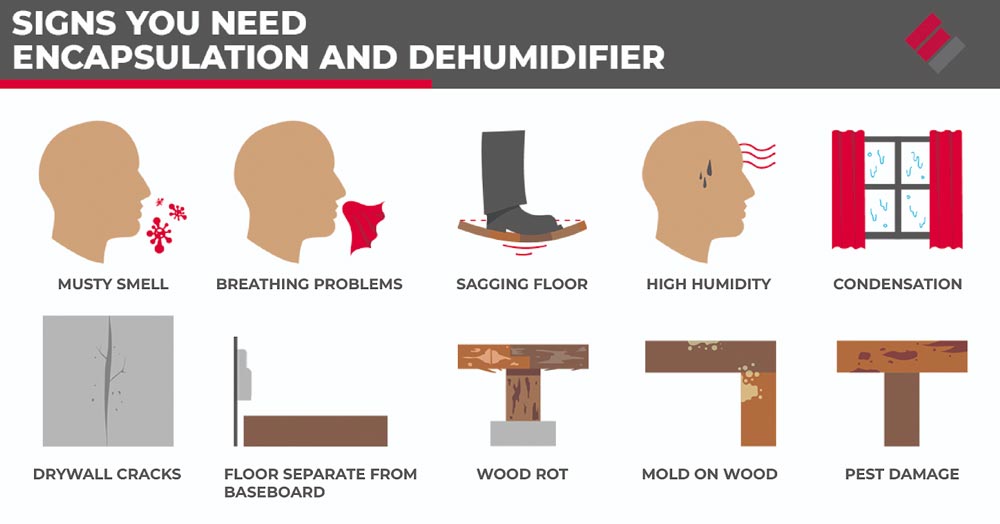
If you see any of the above signs, it’s crucial to immediately identify and address the sources of moisture in your crawl space. A qualified professional can help you determine the best action to ensure your home’s safety and your family’s well-being.
If you have a problem with moisture in your crawl space and have been thinking about a dehumidifier, contact us today to schedule an appointment. Since 1994, we’ve helped clients in Lincoln, Omaha, Southeastern Nebraska, Northwestern Missouri, and parts of Northeastern Kansas with foundation repair, crawl space encapsulation, basement waterproofing and concrete leveling for their homes.

